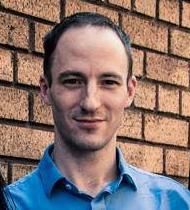Raffaele Viglianti Digital Dialogue
What is the future of sheet music? The flexibility of the digital medium, as opposed to the rigidity of the printed form, calls for a [...]
What is the future of sheet music? The flexibility of the digital medium, as opposed to the rigidity of the printed form, calls for a [...]
EMA is a collaboration with the Du Chemin: Lost Voices project (Haverford College), which is reconstructing songs printed by Nicholas Du Chemin between 1549 and 1568 in Paris. We will work on music analyses already produced by students and scholars as part of the Du Chemin project and re-model them as Linked Open Data nanopublications.

MEI to VexFlow is a JavaScript library used to render music notation encoded according to the Music Encoding Initiative (MEI) format. MEI is a community-driven [...]
This was a 2001 Faculty Fellowship project of Professor Carol Burbank from the Department of Theatre. Employing two different models of performative technology, a series of interactive templates for student experiments in writing, and a web collage or performance “fugue,” Dr. Burbank explored the way pastiche and narrative function within a technological frame.
Photographs, video clips, and other media documenting the 1985 television productions of Beckett's "Waiting for Godot" and "Krapp's Last Tape".
CAMP stands for 'Collaborative, Ajax-Based, Modeling Platform.' As the name suggests, this tool is an open source, collaborative, 3-dimensional modeler that allows users with very little experience to generate a 3-dimensional model in their web browser which they can then allow other users to both view and edit. The tool was initially used to construct an international database of pre-nineteenth century theater buildings, but was designed to be intentionally generic so that scholars interested in structures of any sort could easily port it into their own projects.
Music Theatre Online, based at the Maryland Institute for Technology in the Humanities, is a digital archive of texts, images, video, and audio files relating to musical theater. The best printed editions of musical theater texts cannot fully provide the experience of simultaneous expression of verbal, musical, and terpsichorean languages so necessary to fully understand the art form. Using the multimedia capabilities of the modern web browser, we created a better framework for studying these important works of drama.
The Documentation and Preservation of Dance project brings together an interdisciplinary team from MITH, the Advanced Computing Center for the Arts and Design (ACCAD) at Ohio State University, the John F. Kennedy Center for the Performing Arts, and the New York Public Library for the Performing Arts to host a series of workshops that will establish and document the current state of the art and push forward action on this pressing problem of dance preservation.
Theatre Finder is a collaboratively edited, peer reviewed, online database of historic theatre architecture from the Minoan “theatrical areas” on the island of Crete, to the last theatre built before 1815.
The Visual Accent & Dialect Archive (VADA) is an archive of video clips from around the world, providing both aural and visual information about a dialect or accent. Other academic speech/accent libraries and archives on the web offer only the aural aspect of learning an accent.